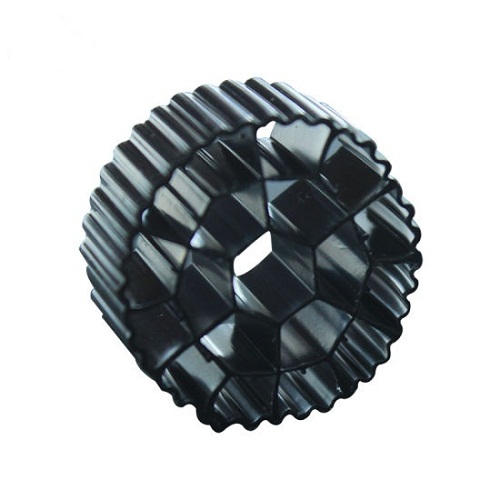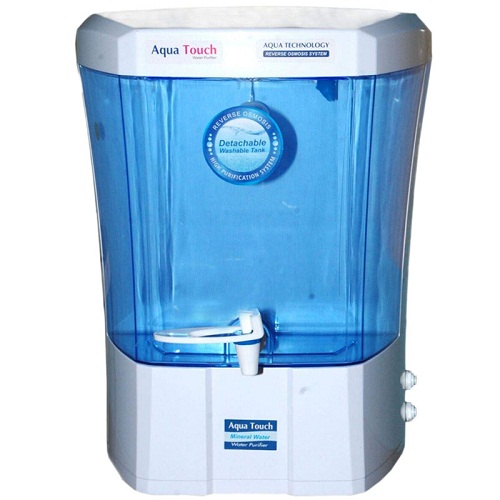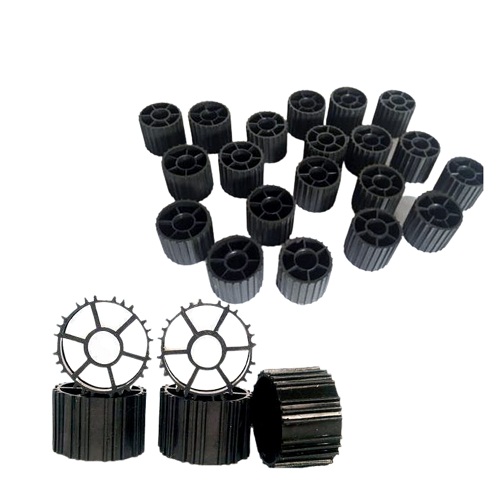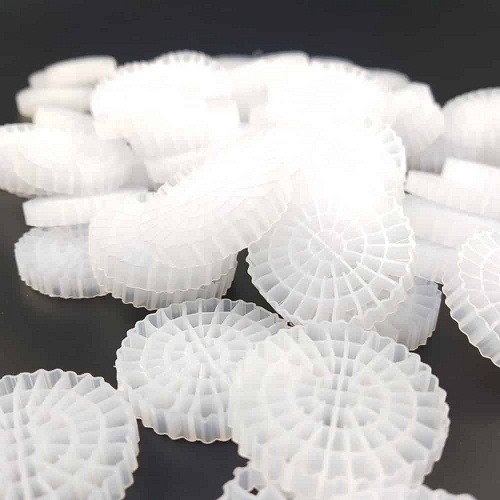
our category
MBBR MEDIA
MBBR Media: Revolutionizing Wastewater Treatment for a Sustainable Future
Overview:
MBBR (Moving Bed Biofilm Reactor) media is an innovative and highly efficient solution used in wastewater treatment systems to promote biological treatment processes. MBBR media is designed to enhance the removal of organic pollutants from wastewater, ensuring that the treated water is safe for discharge or reuse. This technology offers a superior alternative to traditional wastewater treatment methods due to its compact size, high efficiency, and ease of operation. MBBR media is widely used in municipal, industrial, and commercial applications for wastewater treatment.
Enquire Now
What is MBBR Media?
MBBR media consists of small, specially designed plastic carriers or biofilm carriers that are suspended in the wastewater treatment tank. These carriers provide a surface area for microorganisms (such as bacteria) to grow and form biofilms, which degrade organic matter in the wastewater. The media moves freely within the reactor tank, which allows for better contact between the microorganisms and the pollutants, improving the efficiency of the biological treatment process.
The key features of MBBR media include:
- High Surface Area: The media is designed with a large surface area, allowing a higher number of microorganisms to grow, resulting in more effective biodegradation of organic pollutants.
- Durability: MBBR media is typically made of high-density polyethylene (HDPE) or polypropylene, which ensures it is durable, resistant to chemical degradation, and can withstand harsh environmental conditions.
- Self-Cleaning: The movement of the media in the treatment tank helps prevent clogging and maintains optimal surface conditions for biofilm growth.
How MBBR Media Works:
The MBBR process operates in the following steps:
- Introduction of Wastewater: Wastewater flows into the MBBR reactor, where it is mixed with the MBBR media. The media is designed to remain suspended in the wastewater and move freely due to aeration or mechanical mixing.
- Biofilm Growth: Microorganisms in the wastewater begin to colonize the surfaces of the MBBR media, forming biofilms. These biofilms consist of bacteria and other microorganisms that break down organic pollutants in the wastewater.
- Biodegradation: As the wastewater moves through the reactor, the biofilm microbes consume the organic materials, including organic nitrogen and carbon compounds, thereby treating the water. The treated water continues to flow through the system, while the biofilm grows and eventually sheds.
- Effluent Discharge: Once the wastewater has been treated by the MBBR process, the clean water is discharged or can be further treated if required. The MBBR media continually provides a surface area for biofilm growth, ensuring continuous treatment.
Benefits of MBBR Media in Wastewater Treatment:
-
Compact Design: MBBR media offers a compact solution for wastewater treatment, requiring less space compared to traditional treatment methods like activated sludge systems. This makes it ideal for areas with limited space or in situations where land costs are a concern.
-
High Efficiency: The high surface area of MBBR media allows for better microbial growth and higher treatment capacity. This leads to improved removal of organic contaminants, nutrients (such as nitrogen and phosphorus), and suspended solids from wastewater.
-
Scalability: MBBR systems are highly scalable, which makes them suitable for both small-scale and large-scale wastewater treatment projects. The media can be easily adjusted or expanded to meet the increasing demands of wastewater treatment.
-
Low Energy Consumption: MBBR systems operate with low energy requirements compared to other biological treatment systems. The design of the media promotes efficient oxygen transfer, which helps in reducing the overall operational costs of the treatment process.
-
Minimal Maintenance: Since MBBR media is designed to be self-cleaning, the systems require minimal maintenance. The movement of the media in the tank prevents clogging and ensures that the biofilm remains healthy and effective, reducing the need for frequent maintenance and cleaning.
-
Versatility: MBBR media can treat a wide range of wastewater types, including domestic, industrial, and municipal wastewater. It is also effective in treating high-strength wastewater and can be used in various settings, such as wastewater treatment plants, food processing industries, and textile industries.
-
Reduced Sludge Generation: MBBR systems typically generate less sludge compared to conventional activated sludge systems, resulting in lower operational costs and reducing the need for sludge handling and disposal.
-
Environmental Sustainability: MBBR media contributes to environmental sustainability by promoting efficient wastewater treatment that reduces pollution and conserves water resources. The treated water can be reused in various applications, such as irrigation, industrial processes, or even potable water production after further treatment.
Applications of MBBR Media:
-
Municipal Wastewater Treatment: MBBR media is commonly used in municipal wastewater treatment plants for the treatment of domestic wastewater. It helps meet regulatory standards for effluent discharge, ensuring that the water released back into rivers, lakes, or oceans does not harm the environment.
-
Industrial Wastewater Treatment: Various industries, including food and beverage, chemical, textile, and pharmaceutical sectors, use MBBR media for treating wastewater. The system is effective in removing organic contaminants, oils, fats, and other industrial pollutants.
-
Sludge Treatment and Stabilization: MBBR systems can be used in combination with other treatment processes for sludge treatment and stabilization. This makes it possible to treat both the liquid and solid components of wastewater more efficiently.
-
Nutrient Removal: MBBR media is highly effective in removing nutrients such as nitrogen and phosphorus from wastewater, making it ideal for meeting stricter environmental regulations and preventing eutrophication in receiving water bodies.
-
Upgrading Existing Treatment Plants: MBBR media can be used to upgrade existing wastewater treatment plants, enhancing their performance without the need for a complete redesign or the construction of new facilities. It offers a cost-effective solution to increase treatment capacity and improve effluent quality.
-
Decentralized Treatment Systems: For remote or off-grid locations, MBBR systems are ideal as decentralized wastewater treatment solutions. Their compact design and low energy requirements make them suitable for small communities or industries that need an efficient way to treat wastewater without relying on centralized infrastructure.
Key Features of MBBR Media:
- Material: MBBR media is typically made from durable, non-corrosive plastic materials such as HDPE (High-Density Polyethylene) or polypropylene, ensuring longevity and resistance to harsh environmental conditions.
- Surface Area: The media is designed with a large surface area, providing ample space for microorganisms to form biofilms that degrade organic pollutants.
- Shape and Design: MBBR media comes in various shapes such as rings, discs, and stars, with unique designs that maximize surface area and optimize microbial attachment.
- Size and Weight: The media is lightweight and small in size, allowing for easy handling and installation in wastewater treatment systems.
Conclusion:
MBBR media has revolutionized wastewater treatment by providing a highly efficient, compact, and scalable solution for treating wastewater. Its ability to offer superior biological treatment while reducing energy consumption and maintenance requirements makes it an attractive choice for industries, municipalities, and residential applications. With its versatility, low sludge generation, and high performance, MBBR media continues to play a vital role in achieving sustainable and environmentally friendly wastewater treatment solutions. Whether upgrading existing systems or implementing new ones, MBBR media is a key component in ensuring effective and efficient wastewater management for a cleaner, healthier world.



